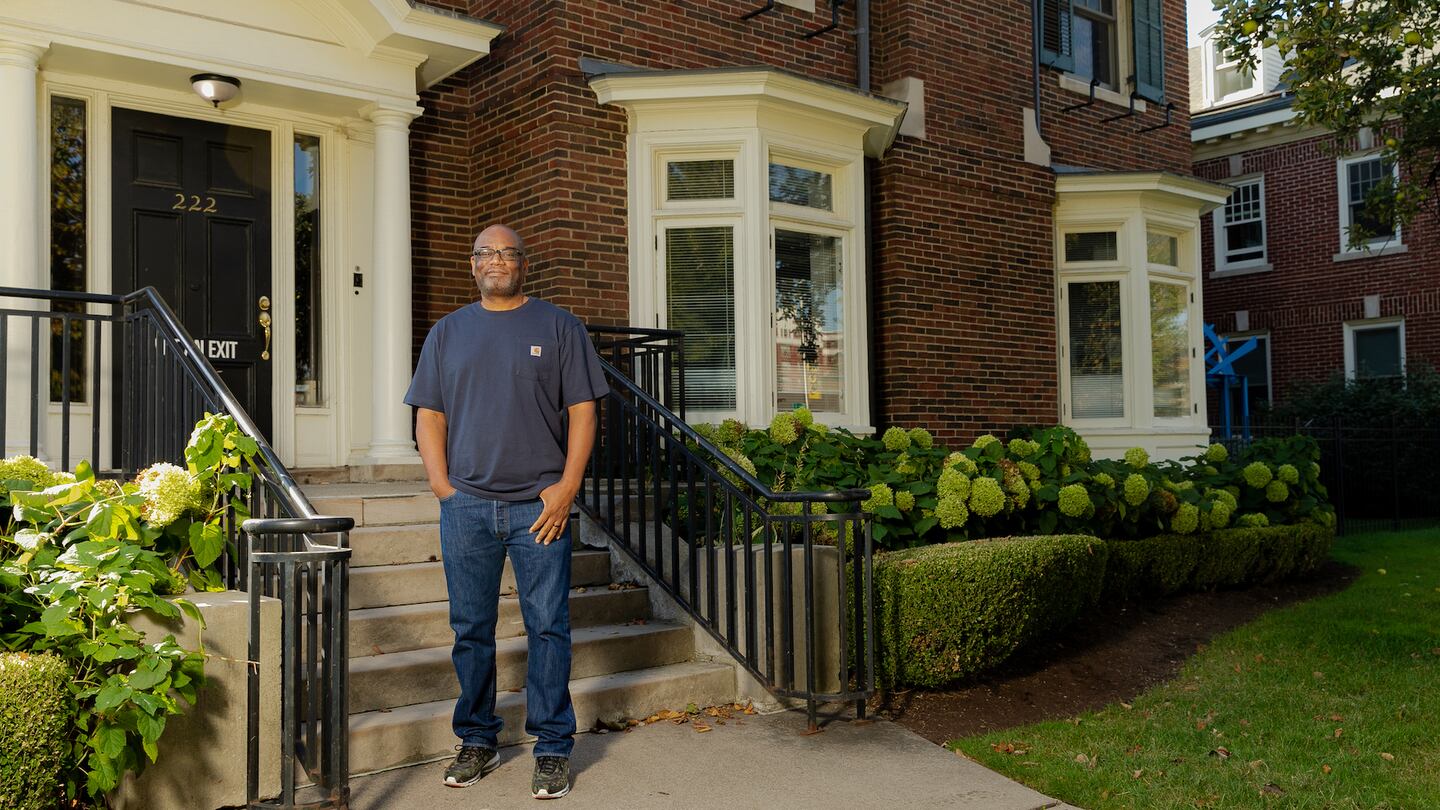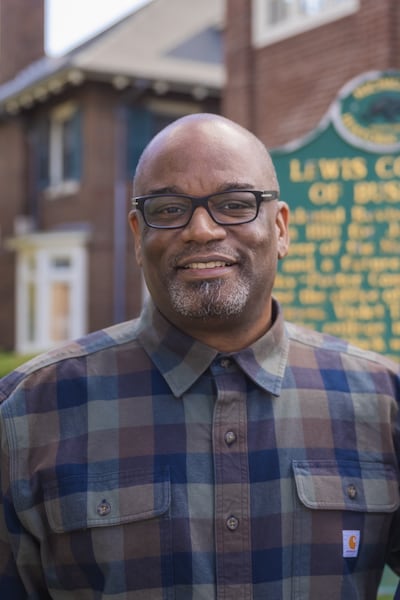
The Business of Fashion
Agenda-setting intelligence, analysis and advice for the global fashion community.

Agenda-setting intelligence, analysis and advice for the global fashion community.

This year, Snapchat has partnered with BoF to platform three new members of the BoF 500 that represent innovation across business, creative and technology categories. Among the selected is Dr. D’Wayne Edwards, president and founder of the Pensole Lewis College of Business and Design.
After an expansive 30-year career as a footwear designer for staple brands such as Nike, Skechers and Jordan Brand, Edwards went on to become founder of the Pensole Footwear Design Academy in 2011 with the goal of training and inspiring the next generation of footwear designers.
The academy consists of a footwear studio where Pensole instructors teach footwear design, brand design, functional apparel and accessories, and colour material design. Innovation is a significant part of the academy’s approach, with Pensole offering hands-on experience in prototyping — teaching its students how to make shoes from scratch. Pensole also houses a personal design studio where they produce custom projects for various brands.
Following the foundation of the academy, Edwards went further still in establishing educational resources for the next generation. The Lewis College of Business was founded in 1928 by Violet T. Lewis in Indiana, relocating to Detroit in 1939. The college was the first-ever historically Black college and university (HBCU) to open in Detroit. The school remained in operation for nearly 75 years until it closed in 2013. Edwards reopened the college in March 2022 with a unique curriculum centred in design and business.
Pensole Lewis College of Business and Design is the first HBCU in the US to focus on design and has seen the likes of Nike invest $3 million as a three-year grant, as well as Designer Brands Inc., which invested $2 million.
Now, BoF sits down with Dr. D’Wayne Edwards to understand how he is innovating design education.

What compelled you to open the Pensole Footwear Design Academy?
There are two schools — the academy was first and then Lewis College was second. What guided me to open the academy was a few things: there were no schools globally that you could learn how to design sneakers; [and] there was also a lack of diversity in the footwear industry. So, it is really a combination of those two things that propelled me to look and say: “This needs to be addressed, let me see if there is an interest.”
We did our first session in 2010 and the reception was huge. Kids started following us online and there was one that actually blogged every day in the class. We started to have some of the top design schools globally reach out and say “can you come to teach it at our school?” It was something that the students wanted, but they didn’t know how to ask for it because they didn’t see it.
What inspired your acquisition of Lewis College, an HBCU historically focused on design?
It was a huge step to reopen the first historically Black college that has a focus on design. That has much more importance as it pertains to looking at diversity being important in the fashion industry as we move forward.
It now gives kids globally a place to aspire — to want to attend — and learn from the actual instructors who are also former designers themselves, who are also from diverse backgrounds. [It is about] being around people who have the same interest and like-minded focus that you can relate to, even in good relation and bad relation — we all have good days and those bad days where we need some consultation and some insights.
What defines footwear design today?
I’m old school, [so] for me, it is honouring the craft first and foremost. I think whatever profession you choose, you want to make sure you understand the history before you create, and so what we do is teach the true fundamentals of how to design first — really helping understand how to draw with your hands.
It now gives kids globally a place to aspire — to want to attend — and learn from the actual instructors who are also former designers themselves, who are also from diverse backgrounds.
When you pick a point of inspiration, you have to commit to that inspiration. When you pick a consumer, you have to become that consumer, just as an actor or an actress takes on a movie role. It is that level of authenticity to the craft that is critical because once you have that, then actually more ideas and more insights come to you. [Then] you can tap into it from that authentic lens of how you are going to redefine that craft and how you are going to redefine that product that you are working on.
How has technology bolstered innovation within design principles?
It is a delicate balance. Fundamentally, you need to understand how to do it with your hands and then let the digital tools elevate what you are able to create, instead of the reverse.
Sometimes with social media, kids want to design but they go straight to a computer and they make this pretty picture — but it is not a design. There is a difference. You can make a pretty picture, but can it actually be made into a real object? So, what we do is balance the idea of helping them understand how to actually design and make something, and then use technology to make it come to life and make it become easier to manufacture and move forward with instead of the reverse.
This is the weird thing about design — you can be inspired by anything. I did a project for [basketball player] Carmelo Anthony and one of the points of inspiration was pantyhose. When I pitched it to him at first, he was like, “Wait, what’s up with pantyhose? You’ve lost your mind this time.” [...] [But] if you ever watch a basketball game, you will see guys wearing sleeves, leggings and tights. I had this conversation with Melo 15 years ago, where he was the only one wearing the sleeves. It was to help his arm because he had some tendonitis, but what the compression does is actually contain the muscles and it helps increase blood flow.
Once we took that into digital form, we were able to digitise how tight we made the actual material, how loose you would make it and where we needed [it] to stretch. So, the technology allowed us to actually re-engineer things that we saw and experienced. But according to people’s size and width, we were able to re-engineer it so it actually fit them properly without cutting off their blood circulation.
What advice can you share with those seeking to follow in your footprints?
You are born with artistic talent and then, over time, you develop that talent — whether it goes into art or design. Respect it to the point where you are doing things as if this was the last time.
Hopefully sharing my path allows [the students] to create their own path, and then they then take ownership on themselves of mentoring the next generation as well.
Make sure that you approach every project that you do as your last project. So, you give 100 percent of what your abilities are so you are proud of what is released to the world. If you go into that mindset, then you put forth a maximum effort to make a beautiful result.
What does the BoF500 mean to you?
As a fan of the publication for quite some time, to be in a select group of people is amazing. But then also, for me, when I left the industry as a designer […] my goal was to make people forget that I ever designed sneakers, [even though] I had designed shoes for over three decades. […] That’s probably the part that I’m most proud of — being recognised for the impact I’m having on design, not necessarily the design work that I have done or that I am doing.
That part to me means the most, being recognised for shaping the next generation of designers, [because] I really do feel I was blessed with this gift and to give it to the next generation. Hopefully sharing my path allows them to create their own path and then they then take ownership on themselves of mentoring the next generation as well.
Being a part of the 500 — that is in that impact zone. That means an awful lot. I can’t put [it] into words because it’s a global recognition and that tells me these decades of me doing this was all worth it.
This is a sponsored feature paid for by Snap as part of a BoF partnership.
From analysis of the global fashion and beauty industries to career and personal advice, BoF’s founder and CEO, Imran Amed, will be answering your questions on Sunday, February 18, 2024 during London Fashion Week.
The State of Fashion 2024 breaks down the 10 themes that will define the industry in the year ahead.
Imran Amed reviews the most important fashion stories of the year and shares his predictions on what this means for the industry in 2024.
After three days of inspiring talks, guests closed out BoF’s gathering for big thinkers with a black tie gala followed by an intimate performance from Rita Ora — guest starring Billy Porter.